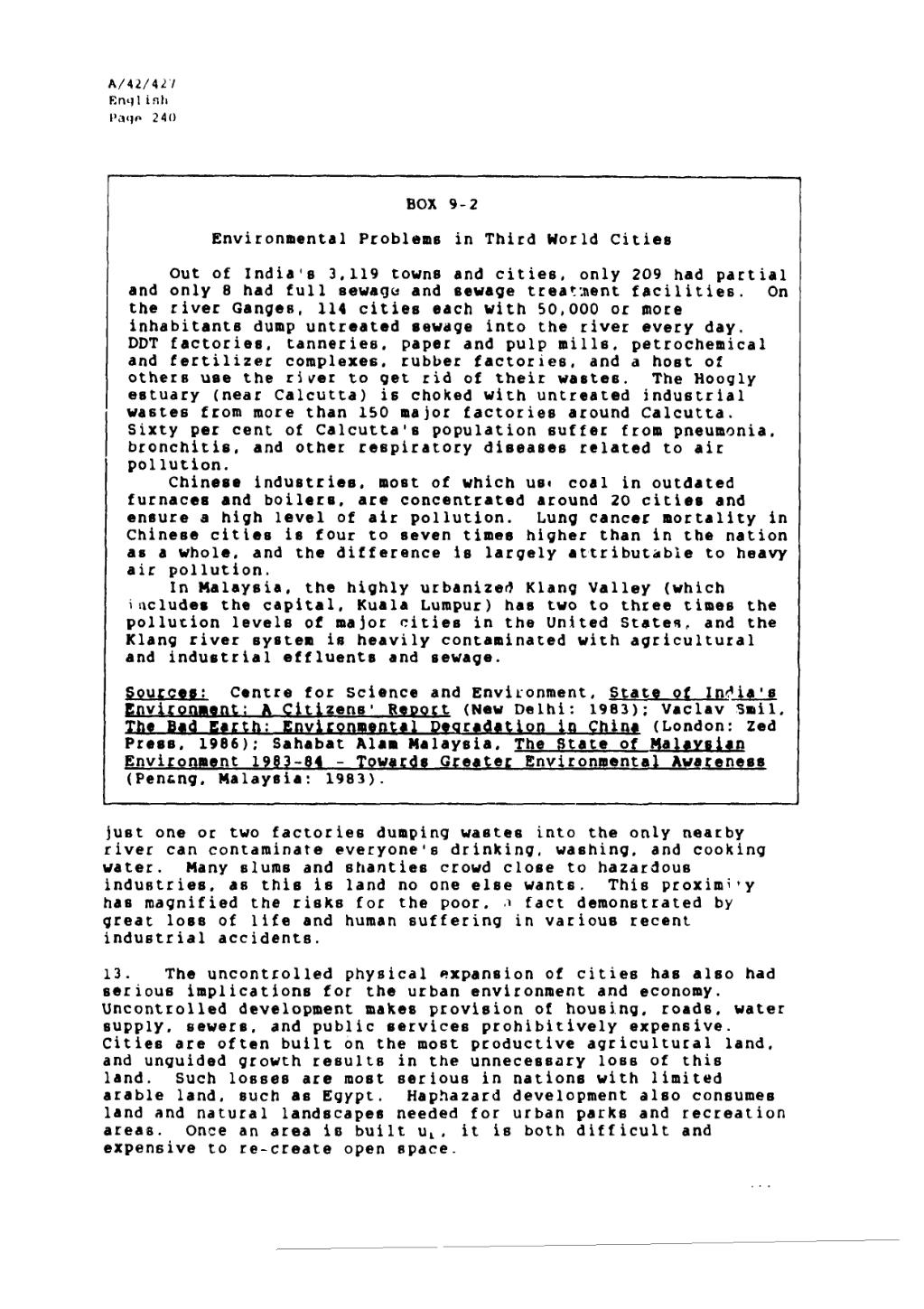A/42/427
English
Page 240
BOX 9–2
Environmental Problems in Third World Cities
Out of India's 3,119 towns and cities, only 209 had partial and only 8 had full sewage and sewage treatment facilities. On the rivet Ganges, 114 cities each with 50,000 or more inhabitants dump untreated sewage into the river every day. DDT factories, tanneries, paper and pulp mills, petrochemical and fertilizer complexes, rubber factories, and a host of others use the river to get rid of their wastes. The Hoogly estuary (near Calcutta) is choked with untreated industrial wastes from more than 150 major factories around Calcutta. Sixty pet cent of Calcutta's population suffer from pneumonia, bronchitis, and other respiratory diseases related to air pollution.
Chinese industries, most of which us, coal in outdated furnaces and boilers, ate concentrated around 20 cities and ensure a high level of air pollution. Lung cancer mortality in Chinese cities is four to seven times higher than in the nation as a whole, and the difference is largely attributable to heavy air pollution.
In Malaysia, the highly urbanized Klang Valley (which includes the capital, Kuala Lumpur) has two to three times the pollution levels of major cities in the United Stats; and the Klang river system is heavily contaminated with agricultural and industrial effluents and sewage.
Sources: Centre for science and Environment, State of India's Environment: A Citizens Report (New Delhi: 1983); Vaclav Smil, The Bad Earth: Environmental Degradation in China (London: Zed Press, 1986); Sahabat Alam Malaysin, The State of Malaysian Environment 1983-84 – Towards Greater Environmental Awareness (Penang, Malaysia: 1983).
just one or two factories dumping wastes into the only nearby river can contaminate everyone's drinking, washing, and cooking water. Many slums and shanties crowd close to hazardous industries. as this is land no one else wants. This proximity has magnified the risks for the poor, a fact demonstrated by great loss of life and human suffering in various recent industrial accidents.
13. The uncontrolled physical expansion of cities has also had serious implications for the urban environment and economy. Uncontrolled development makes provision of housing, roads, water supply, sewers, and public services prohibitively expensive. Cities are often built on the most productive agricultural land, and unguided growth results in the unnecessary loss of this land. Such losses are most serious in nations with limited arable land, such as Egypt. Haphazard development also consumes land and natural landscapes needed for urban parks and recreation areas. Once an area is built on, it is both difficult and expensive to re-create open space.
/…
